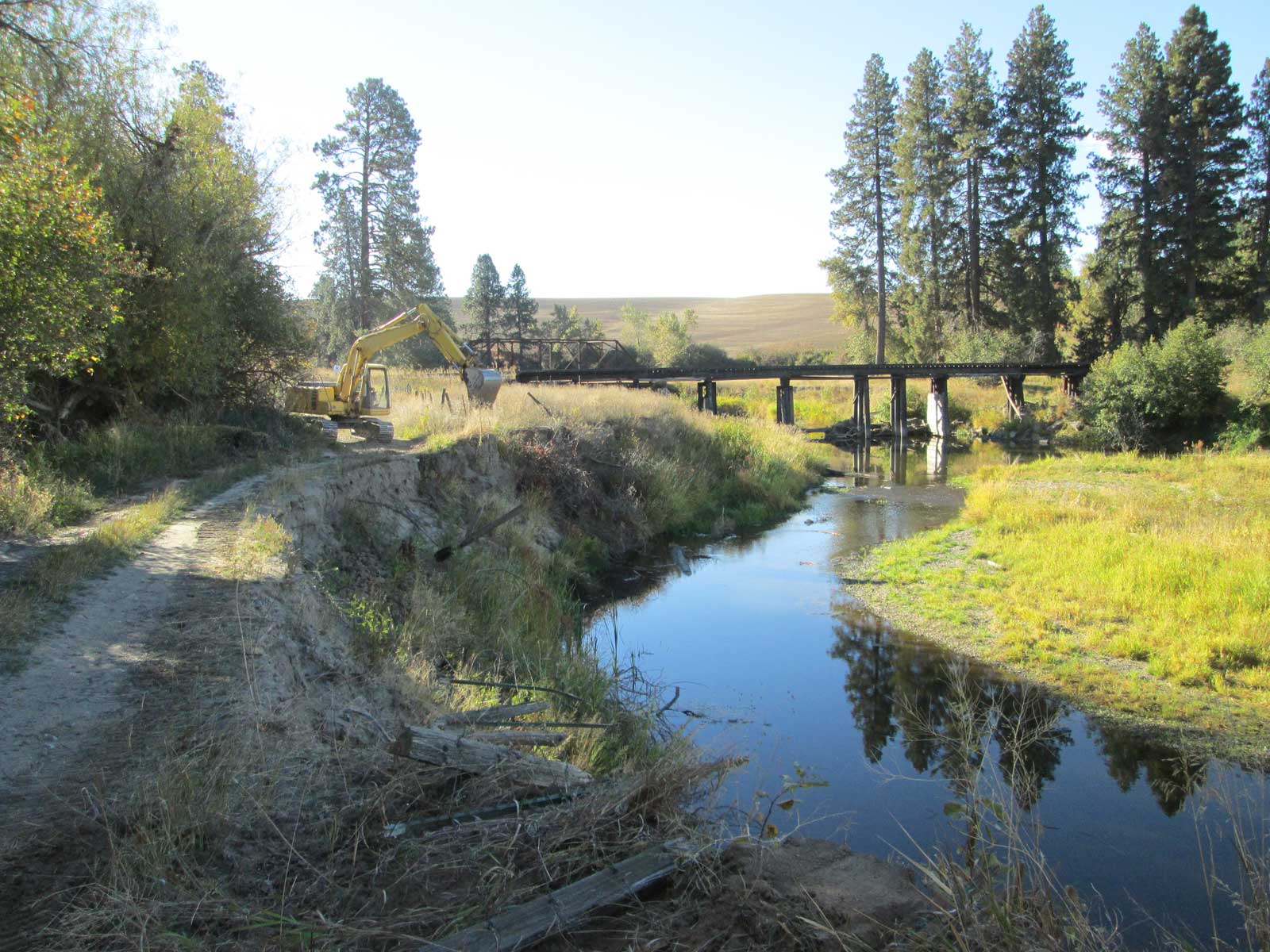Playing in the dirt isn’t all that we get to do. Sometimes we get to play in dirt and water (or at least near water). Protecting river and stream banks from erosion, restoring meadow and stream hydrology to its native condition, and installing culverts are some of the areas where our excavation work intersects with waterways and the conservation of our natural resources.
Services Include:
- Rip-Rap
- Wetland Development
- Stream Bank Stabilization and Protection
- USDA – NRCS Projects
- Willow Plantings
- Meadow Restoration
- Steelhead Habitat Improvements
- Culvert Installation
- Culvert Inlet and Outlet Protection
River and Stream Bank Protection:
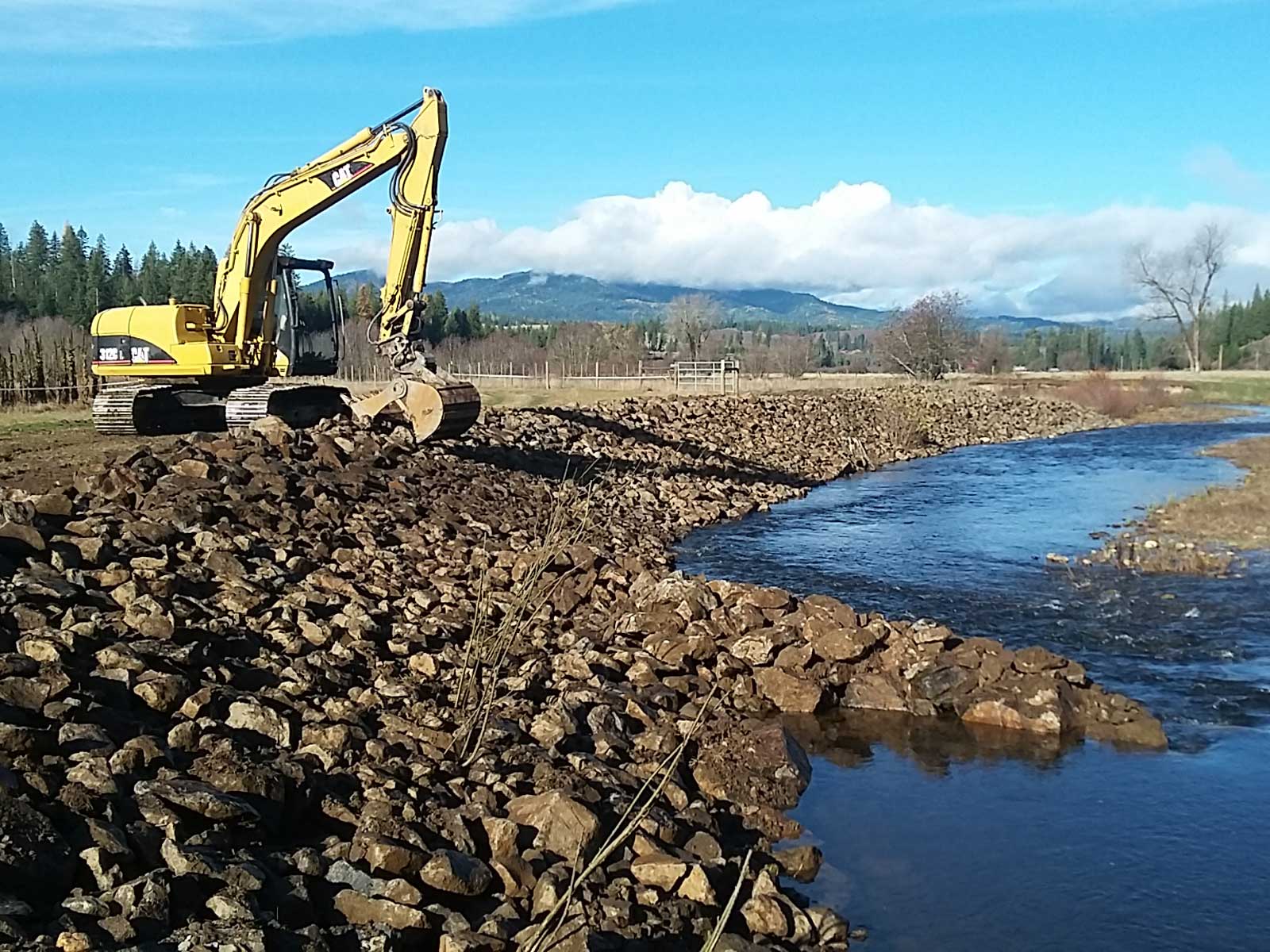
Eroding streams and river banks can eat away productive farmland, threaten existing structures, and send large amounts of sediment washing downstream. Over the years, Hatter Creek Earthworks has worked with local landowners and the NRCS to protect stream banks. The NRCS is often able to provide funding for these projects in addition to project design and permitting assistance.
Although stream bank stabilization can be achieved through many techniques, the projects we’ve constructed typically use large rip-rap to armor the bank. Tree root wads and rock barbs are used to help redirect the flow of water back out into the channel. Willow cuttings and other plantings are also used to revegetate the bank to help with stabilization and provide shade along the stream.
Recent work in this category includes the Palouse River Bank Stabilization at Camp Grizzly North of Harvard.
Stream and Meadow Restoration:
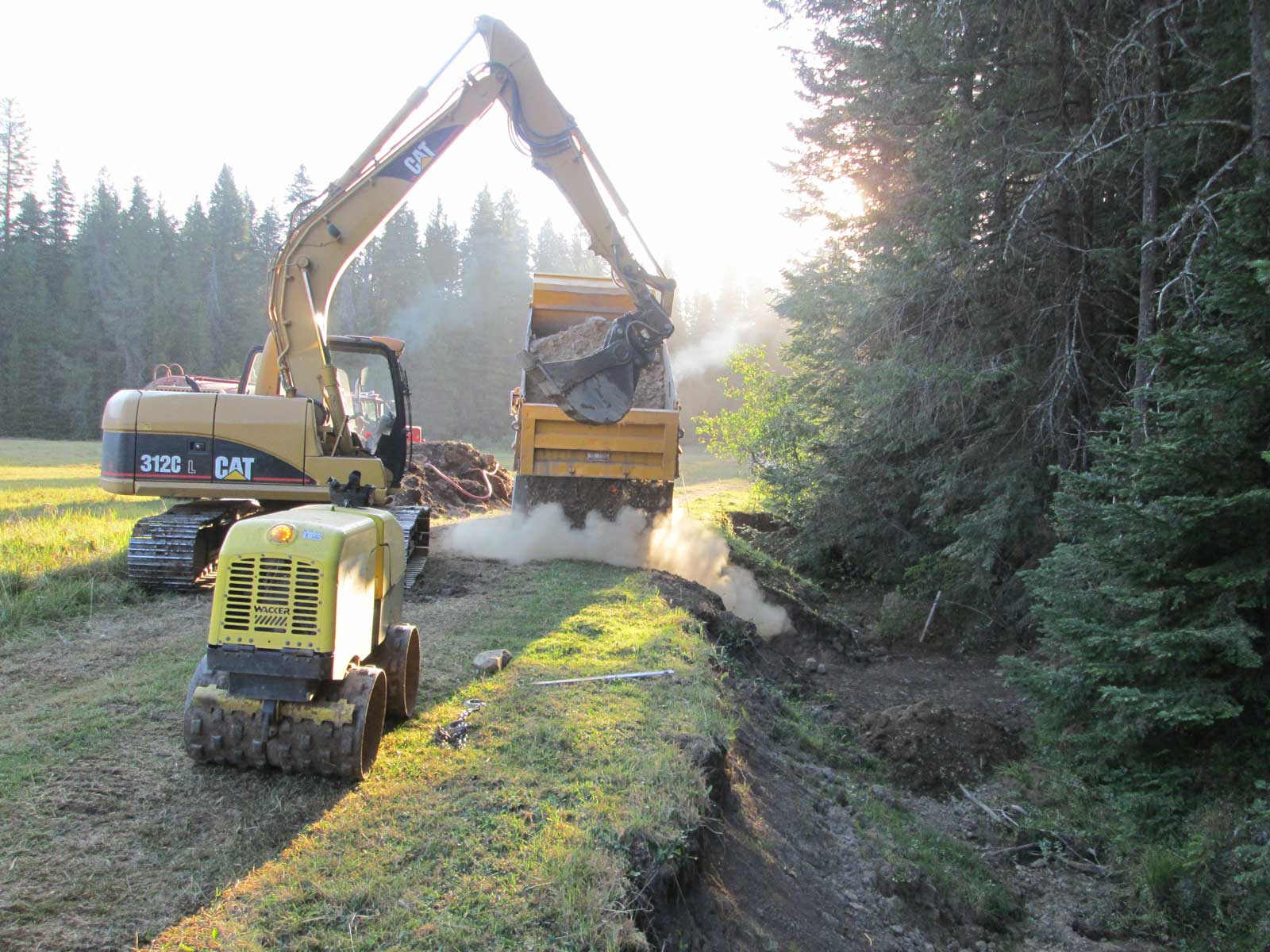
In conjunction with the Latah Soil and Water Conservation District, the US Forest Service, and local landowners, Hatter Creek Earthworks has been selected to construct several streams and meadow restoration projects. These projects are designed to improve meadow and stream hydrology in order to restore healthy meadow and riparian conditions and improve downstream steelhead habitat.
Through these projects, Hatter Creek Earthworks has gained experience in a broad range of conservation/excavation work. Part of the work included harvesting and replanting select native sod containing high-value vegetation. By harvesting and replanting the native sod, excavation work could be done in an area while preserving the existing vegetation. Other work included the construction of ditch plugs used to direct water out of deep channels and back out onto the floodplain. Work also included the construction of in-stream log jams, faux beaver dams, cattle watering structures, and more.
See some of our recent work on the U.S. Forest Service Stream and Meadow Restoration Project.
Culvert Installation and Replacement:
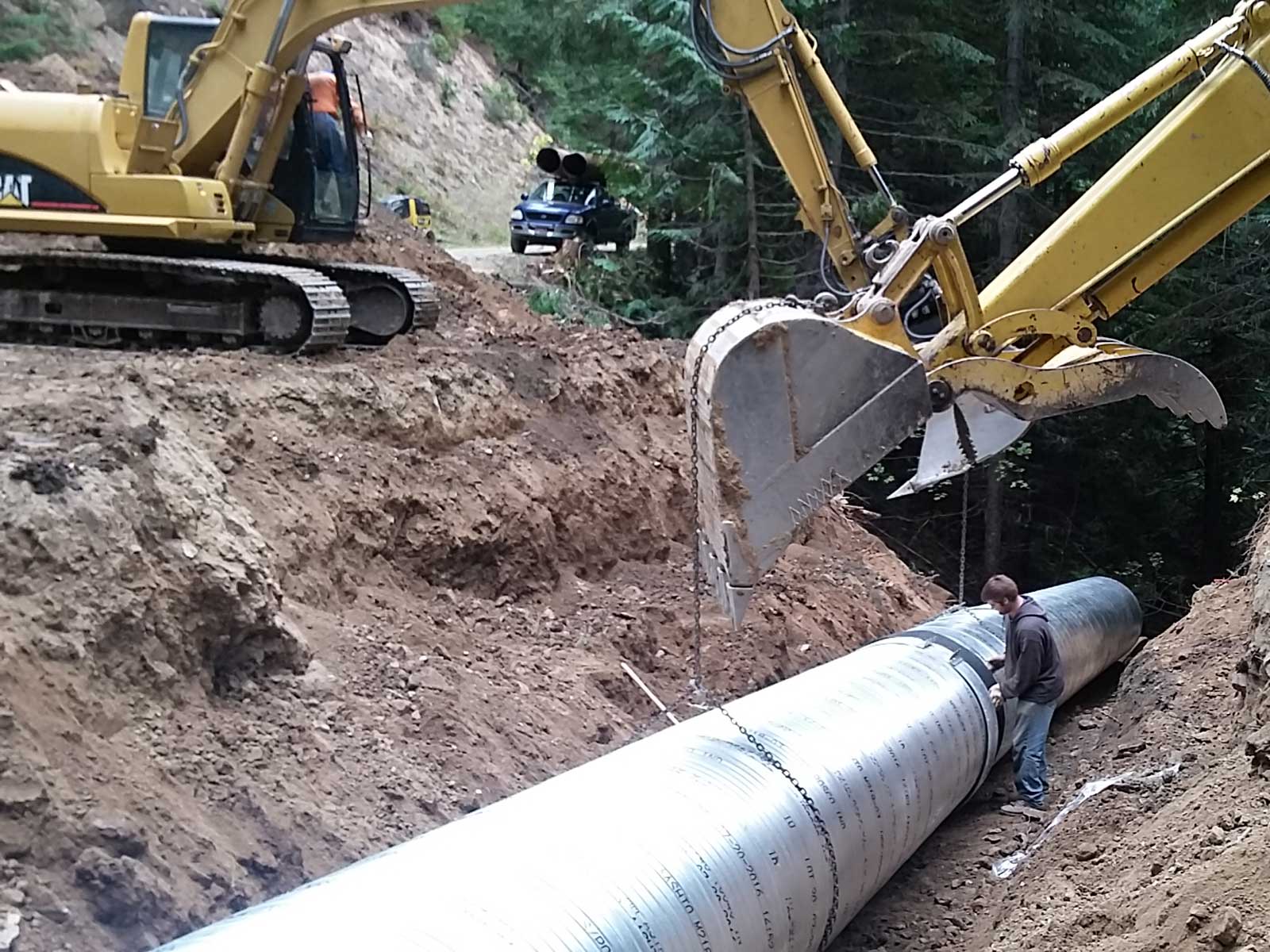
Whether Large or small, deep or shallow, for streams that flow year around or for drainages that flow once a year it doesn’t matter, a culvert is a necessary and essential part of any road/stream crossing. It’s also important that they are installed correctly. Incorrectly installed culverts, as well as culverts that have been damaged or deteriorated over the years, are at risk of washing out. Washouts happen at the worst time of year to repair and can leave you stranded without access.
Hatter Creek Earthworks installs many culverts each year in a wide variety of applications. Some of the more routine culvert installations are 12-inch to 24-inch culverts installed to maintain adequate drainage across driveways. Most stream crossings, however, require larger culverts and may need inlet and outlet protection to prevent washing and scouring. In some cases, it is necessary to divert streams that flow year-round by pumping them or installing a gravity bypass. Whatever the situation, culvert size, or type, Hatter Creek Earthworks has the experience necessary to complete your culvert installation or replacement project and do it correctly.
Here’s a fun culvert replacement project that we did for the United States Forest Service.
